It is April, and I’ve come to learn that the end of this month marks a very special tradition. Every April 30th, Valborg arrives to signal the end of winter and the beginning of spring. In Lund, where university life meets long-standing tradition, the day brings people outside — into parks, onto hilltops, and around fires — to welcome the return of light and life after months of cold and darkness.
In my first year living in Sweden, we happened to be in Stockholm on April 30th and experienced Valborg in Riddarholmen, near the water. Our second year, we spent a couple of days in Båstad, where a fire was lit on the beach. Last year, we stayed in Lund. I didn’t see any fires, but I definitely heard the whooping and revelry into the early hours of the morning. This year, we’re opting for a quieter location. 😊 Noise aside, Valborg is a fascinating tradition with deep history and a very current feel.
Valborg is part celebration, part seasonal reset. It’s not a religious holiday, but it’s deeply cultural — tied to Sweden’s rural past and student life alike. It’s a day to gather — with friends, neighbors, and community — and mark a clear turning point in the year.
(The community lights the bonfire in Riddarholmen in Stockholm)
(Hundreds gathered to celebrate Valborg in Riddarholmen, Stockholm)
What happens on Valborg - In Lund, Valborg starts early. Students wear colorful overalls (each faculty has its own hue) and head to Stadsparken, where thousands gather. It’s casual and social — think barbecues, music, and picnics on every patch of grass. Families, friend groups, and student nations all stake out their spots with blankets and folding chairs.
Later in the day, people head to Sankt Hans Hill or other bonfire locations. At sunset, large piles of brush and old wood are set ablaze. Choirs sing traditional spring songs — like “Vintern rasat ut” (winter has fallen away) — and someone usually gives a short speech. The bonfire is the heart of Valborg: a signal that spring is not only here, but worth noticing.
Even if you’re not at the fire or in the park, you’ll hear it — music, cheering, and the hum of a city waking up from its winter slumber.
Valborg’s origins - Valborg (short for Walpurgis Night) blends several traditions. It’s named after Saint Walpurga, an 8th-century English abbess whose feast day is May 1. In parts of Europe, the night before was believed to be when witches gathered, and people lit fires to ward off evil spirits.
In Sweden, those beliefs eventually faded, but the fires remained — this time as a way for farmers to clear brush from fields, a kind of seasonal cleanup. Later, as cities grew and agriculture declined, Valborg evolved into a spring celebration. Choirs replaced rituals, and towns like Lund and Uppsala made it a major student event.
Today, it’s no longer about superstition. It’s about marking the shift — from cold to warmth, dark to light, waiting to growing.
It’s all about Spring - As someone relatively new to Sweden, I’ve come to appreciate just how much spring matters here. After a long winter of darkness, the return of light is both visible and emotional.
In Lund, crocuses and snowdrops bloom first, followed by daffodils and tulips. Cherry blossoms and magnolias fill the trees. The grass gets greener, and cafés start putting chairs outside again. The sun doesn’t just bring light — it brings a sense of forward motion.
Valborg captures this shift. The bonfire is a symbol of renewal, yes, but it’s also practical — a literal clearing of winter’s remnants. It’s a community way of saying: we made it. And now, we begin again.
(blankets of spring flowers in Stadsparken in Lund)
(Tulips bloom in the botanical garden in Lund)
Coming from California, Valborg can feel unfamiliar. There, seasonal transitions are softer. Spring comes earlier. Winter doesn’t arrive with the same force or darkness. You don’t have to wait for warmth. You might compare Valborg to a summer solstice bonfire, or even Earth Day — moments of seasonal recognition. But in Sweden, Valborg isn’t niche. It’s expected, widespread, and deeply felt.
Valborg is about taking stock. It gives people a reason to pause, go outside, and acknowledge a real shift in the year. The fire, the gathering, the noise — it’s all a way of saying that winter is done, and something new is starting. You don’t have to be Swedish, or know the history, for it to make sense. After months of short days and cold air, the return of light and warmth is something you feel in your body. Valborg puts a marker on that transition — not with a quiet note, but with a visible, communal response. It’s a reset button, tied to the season, not the calendar.
There’s something grounding in that simplicity: burn what’s no longer needed, step into what’s next, and do it together. Spring has arrived.
(A magnolia tree blossoms for just a few days, but is a clear marker that spring has arrived)




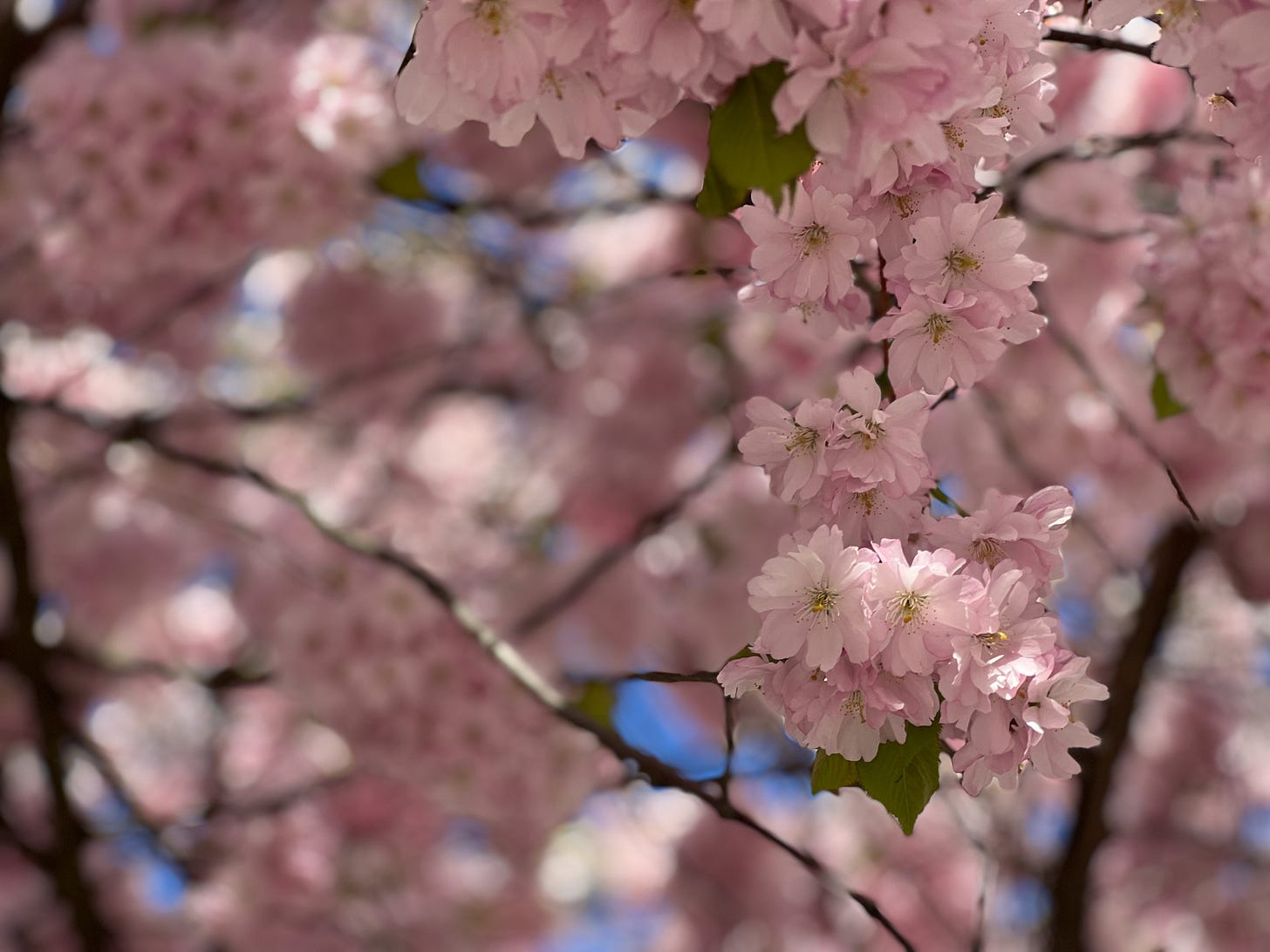

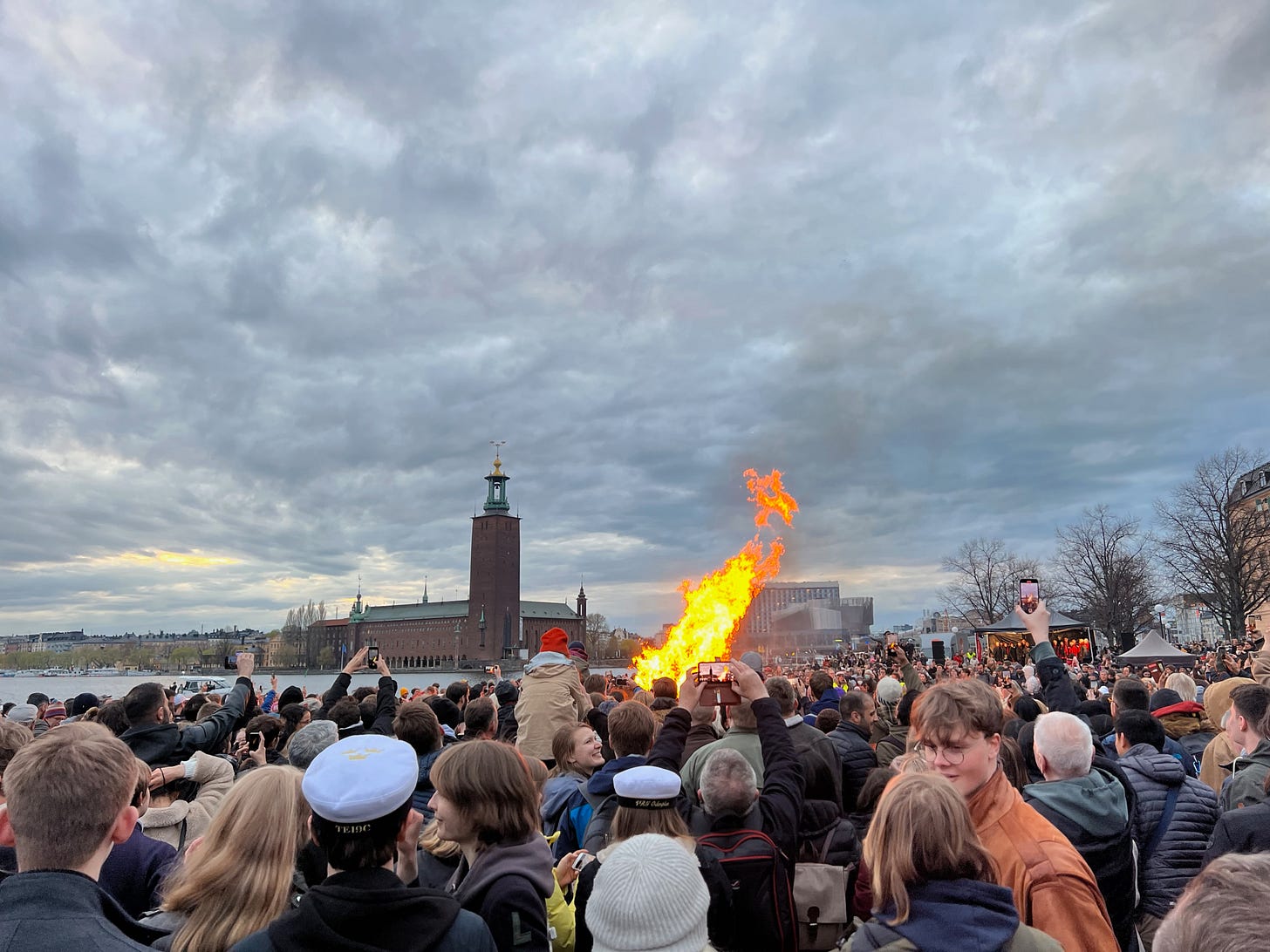
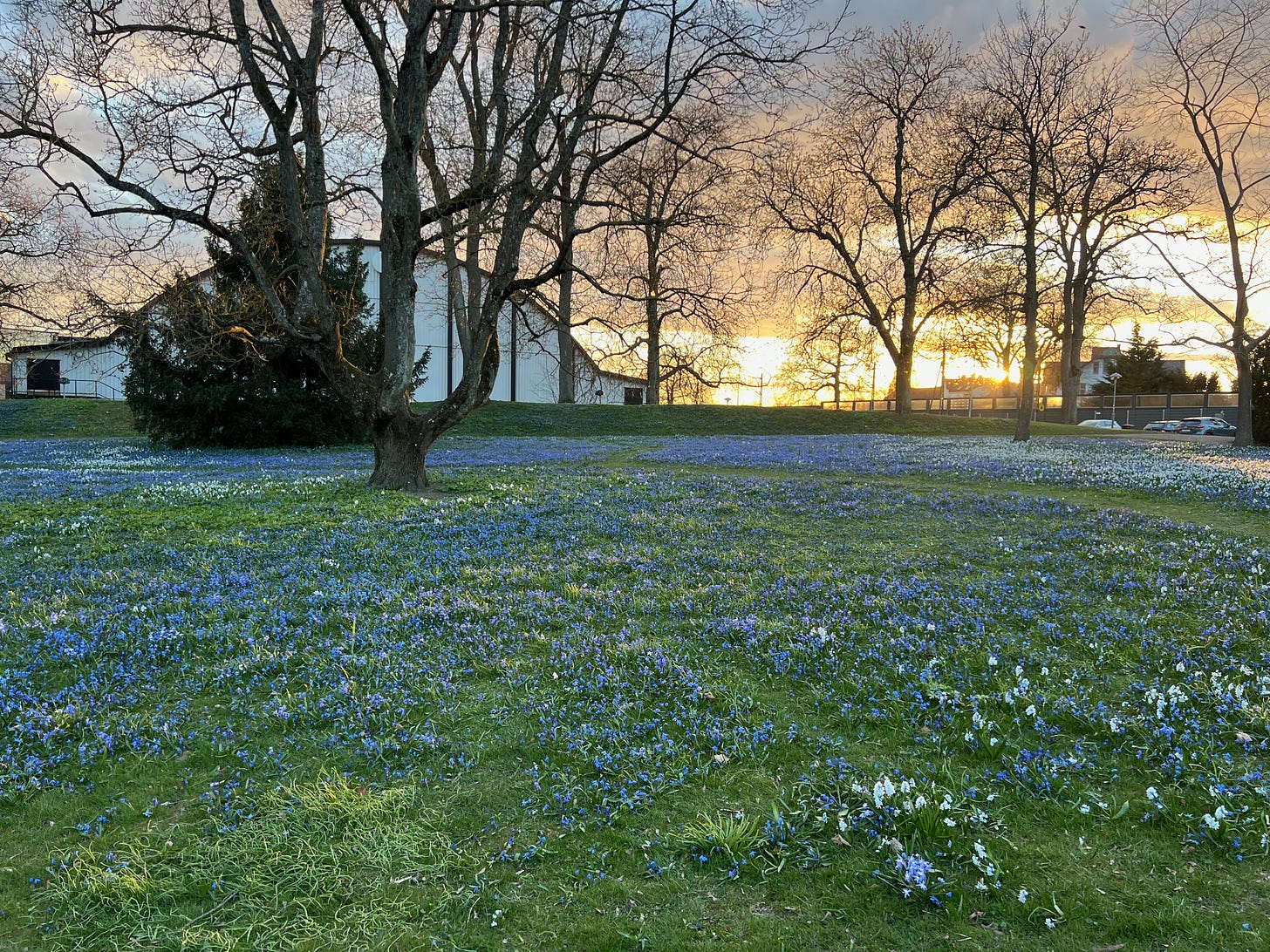
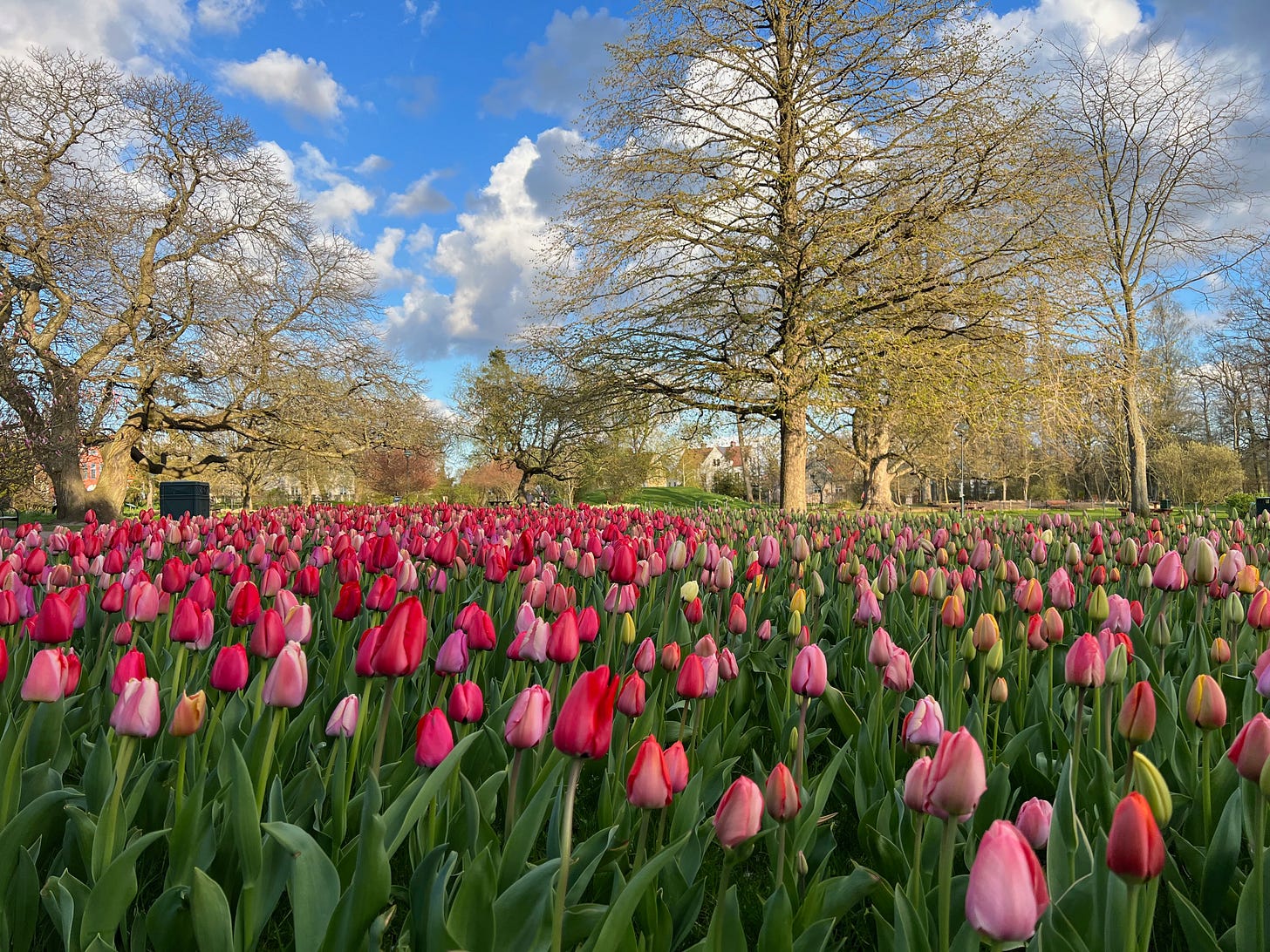
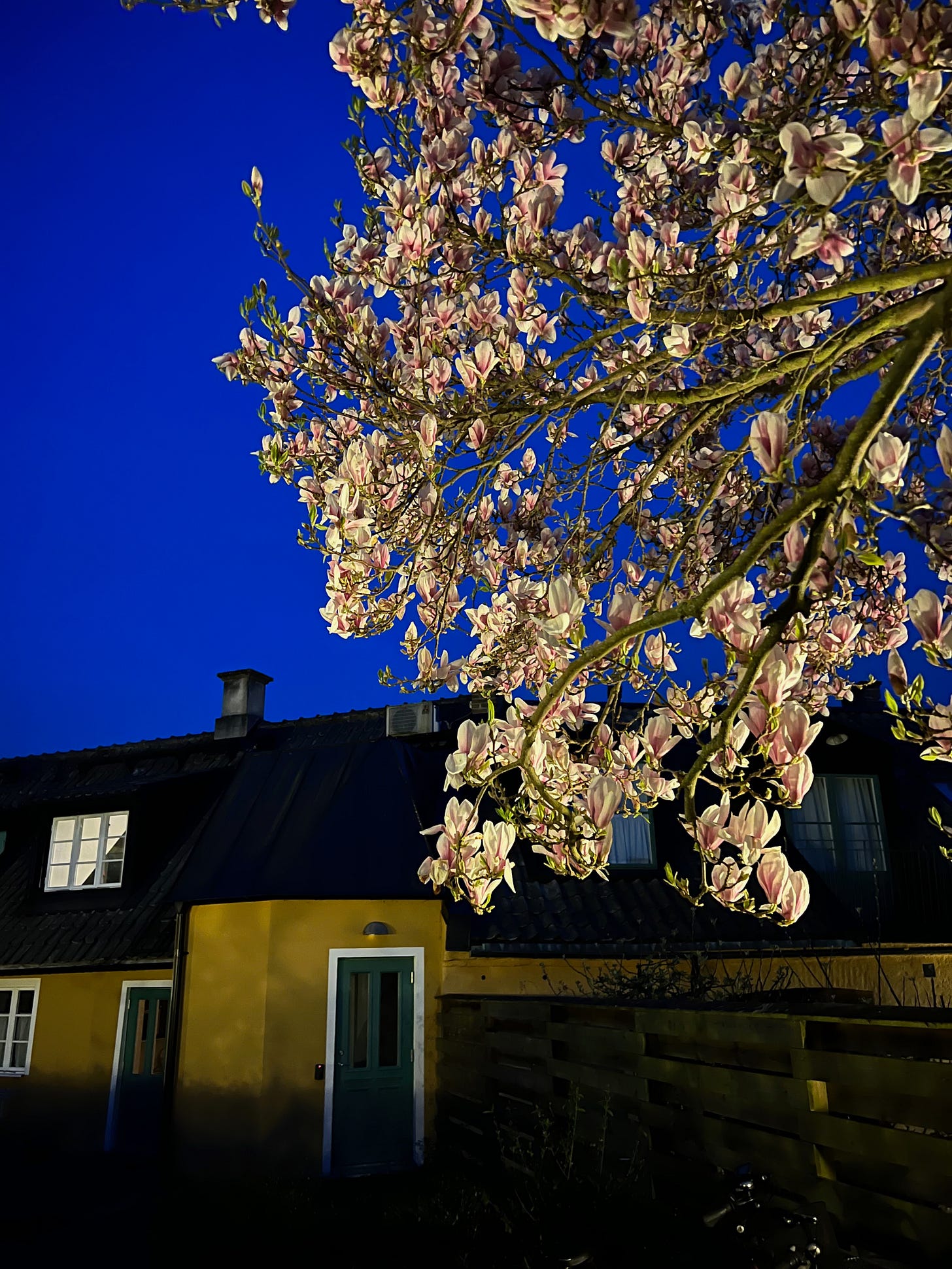
Thanks for the share and the lovely photos!